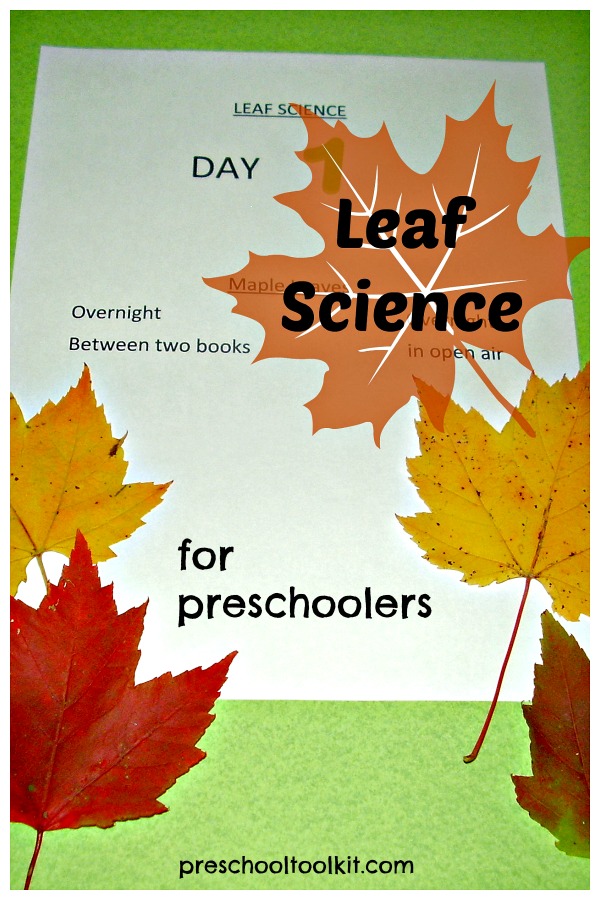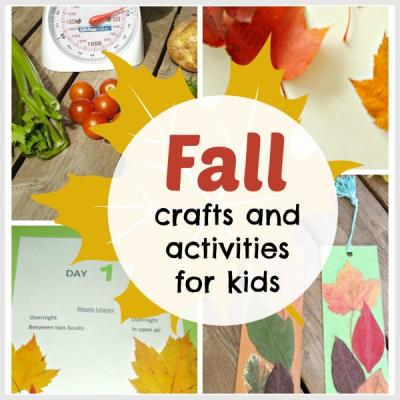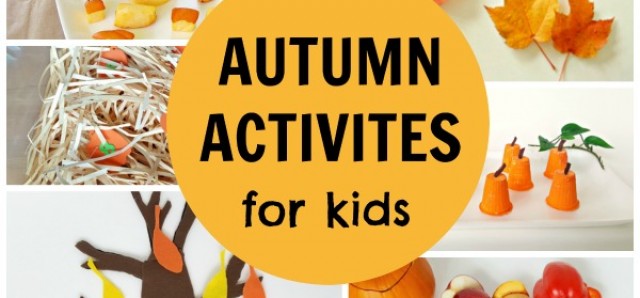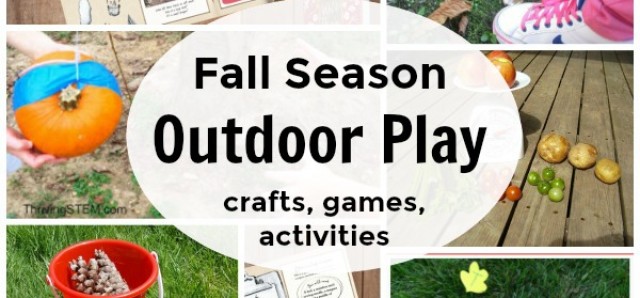Autumn Leaves Science for Kids
Explore autumn leaves with this simple indoor science experiment. This nature activity engages all the senses, and provides valuable hands-on learning through play.
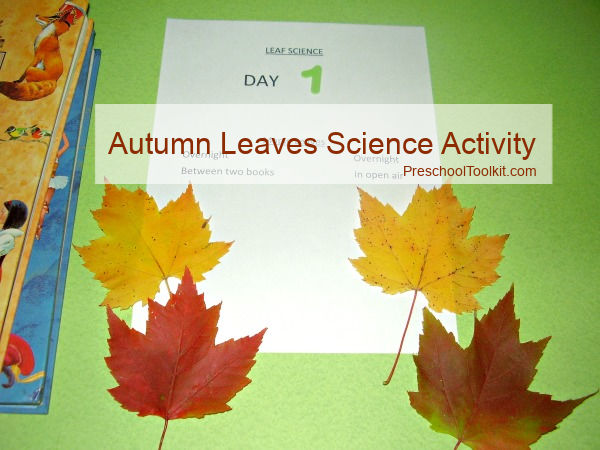
Privacy and Disclosure
for information on cookies and affiliates
Ready to rake some leaves? Or does that sound like a lot of work and no fun at all?
There's an easy way to make it seem less like work and more like entertainment. Engage kids in a fun science activity with fall leaves they collect.
Autumn is an amazing time of year for observing natural elements with preschoolers. This experiment helps kids observe and document changes in leaves during the fall season.
Nature crafts include a variety of textures, smells and colors that provide sensory experiences for kids. There's lots of sensory experience going on in this activity as well, with heavy books, crunchy leaves, and brilliant fall colors!
Fall Season on Pinterest
Observing autumn leaves
Interacting with nature provides opportunities for hands-on discovery and learning. Kids gain awareness of the environment, observe weather conditions and discover animal habitats.
The changing colors of leaves on trees and plants are a clear indication that the fall season has arrived.
There are many ways to enjoy the beautiful red and yellow leaves with early learners.
- Go on a nature walk.
- Include natural materials in crafts.
- Enjoy fun activities like this fun science experiment.
Set up the leaf experiment.
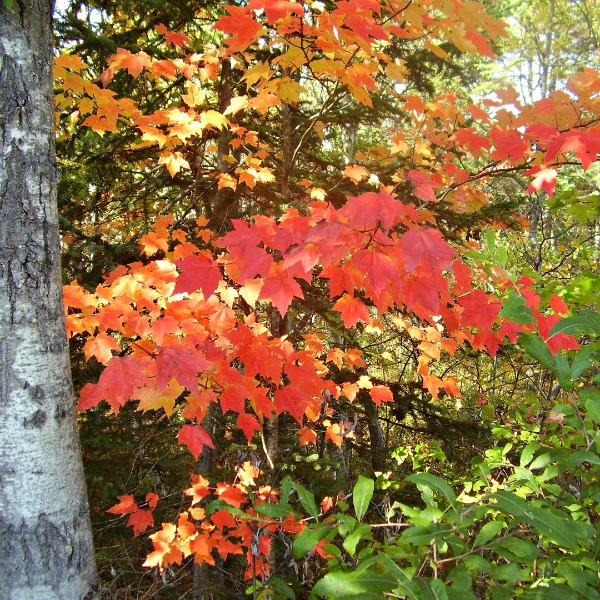
We are fortunate to live near a wooded area, which means we have a great supply of leaves!
The trees are especially beautiful as the leaves change color in the fall.
We used red and yellow maple leaves in this activity but you can use any leaves available in your area.
Here's how to set up the experiment.
- Collect two yellow leaves and two red leaves of similar size.
- Choose two heavy books as weights, and plain white paper for charting results.
- Create a simple chart on the plain paper to observe and record results.
Here's a printable chart you can use to do the daily observations.
You can also create a visual timeline by taking a picture each day and displaying the photos.
Conduct the experiment.
- Place a yellow leaf and a red leaf between the two heavy books.
- Place a yellow leaf and a red leaf on a table or shelf in open air.
- Allow the leaves to remain in place overnight.
Day 1
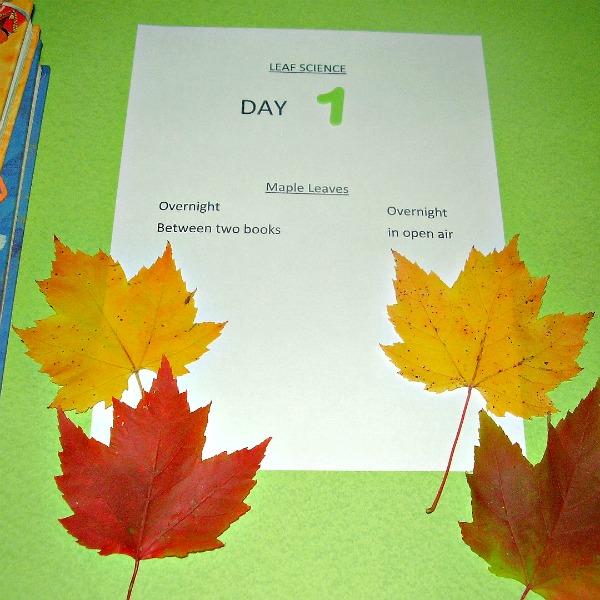
Remove the leaves from between the books.
Compare these leaves with the ones left in the open air overnight.
Make your observations:
Do the leaves look the same? What, if any, are the differences in feel or appearance?
Return the two leaves where they were previously placed under a book.
Leave the remaining two leaves in the open air.
Day 2
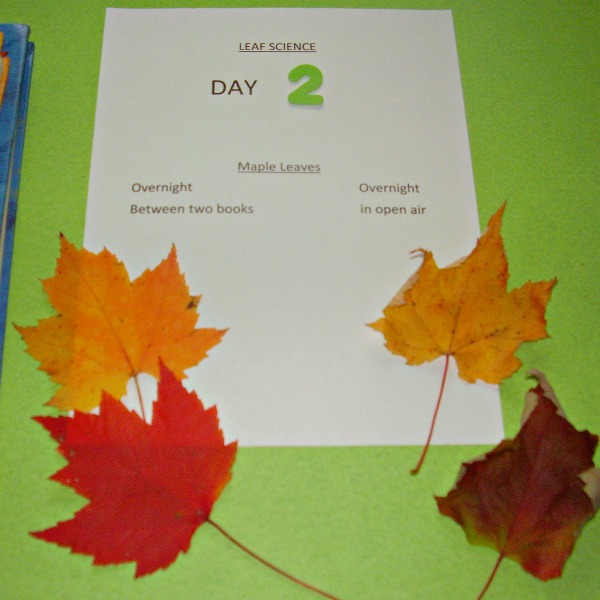
Remove the leaves from between the books.
Compare these leaves with the ones left in the open air overnight.
Make observations.
Return the two leaves to their place between the books.
Continue to observe the leaves for another day or two, placing the same leaves between two books overnight while the same two leaves remain uncovered.
Day 3
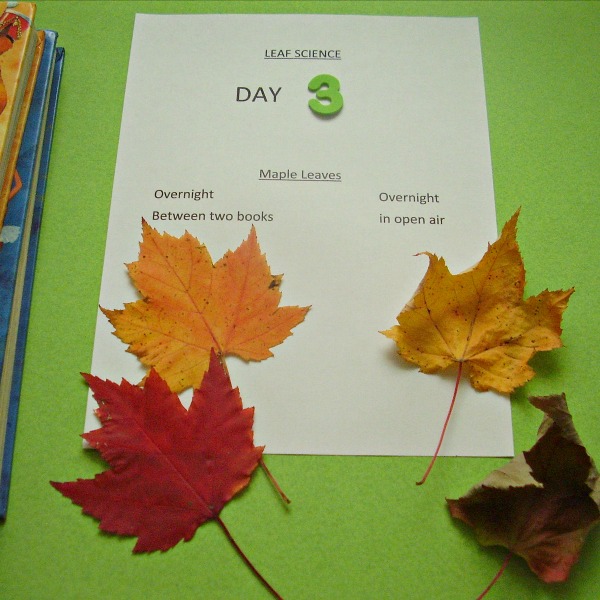
Remove the leaves from between the books.
Compare these leaves with the ones left in the open air overnight.
Make observations.
- How do the leaves differ in shape or color? Have the leaves changed their smell or texture since the beginning of the experiment? is there any difference in the results for a red leaf versus a yellow leaf?
More to explore with autumn leaves
Observing autumn leaves with preschoolers prompts lots of questions and open-ended discussions, and more ways to experiment with the leaves.
1. What may have caused any changes in appearance?
Possible answers include:
- The weight of the book sealed it from the air, preventing it from curling up.
- The leaf in open air dried up when its water evaporated.
2. What would happen to the leaves that had been pressed between the books if left uncovered overnight?
Encourage kids to make predictions.
3. Can the curled leaves be flattened if placed between two books?
Make predictions, then carry out the experiment.
4. Observe leaves outside, on the tree and on the ground.
- Do the leaves curl outside as they do inside?
- Did the leaf curl because it was brought inside?
- Do some types of leaves curl more than others?
Exploring properties of autumn leaves
You can find lots of information online explaining why leaves change color and fall off the branches.
Provide information and activities to your child at home, or the participants in your early learning program, according to interests and skill levels.
Here are a few main points to consider.
1. Chemicals called pigments in the leaves of the trees give them their color.
Chlorophyll gives leaves a green color.
Carotenoids make leaves red, yellow and brown.
2. While leaves are green they make food for the tree, but when leaves receive less warmth from the sun as the weather cools, the chlorophyll in the leaves breaks down. Food becomes stored in the tree instead of in the leaves.
3. When there is not as much chlorophyll present in the leaves, the other colors, which have been there all along, now become more visible.
4. The tree creates a seal between itself and the leaf which prevents food an water from reaching the leaf. The leaf will dry up and fall to the ground, sometimes with the help of wind and rain.
5. Since the tree is now storing food all winter, it will be stronger in the spring to grow new leaves.
6. When leaves fall off the tree, they crumble and mix with other plants and sun and water to become mulch to fertilize the ground around the tree.
Related: Why do leaves fall off trees?
The important outcome for any nature activity is exploring and making observations and discoveries. Kids learn to interact with materials, observe outcomes, and reach conclusions.
The leaves that you and the kids rake together, or gather on a nature walk, can be used in crafts and activities like this science experiment. The crunch of dried leaves, the weight of heavy books, and the interesting results of the experiment all stack up to make this a fun fall activity.
The effort of raking leaves doesn't seem like such a chore after all!
